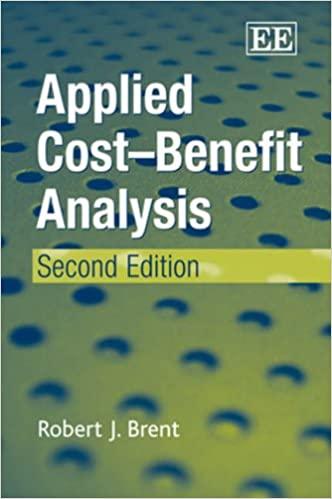Answered step by step
Verified Expert Solution
Question
1 Approved Answer
Departmental Overhead Rates Lansing, Inc., provided the following data for its two producing departments: Polishing $80,000 Estimated overhead Direct labor hours (expected and actual): Form
Departmental Overhead Rates Lansing, Inc., provided the following data for its two producing departments: Polishing $80,000 Estimated overhead Direct labor hours (expected and actual): Form A Form B Total Machine hours: Form A Form B Total Molding $400,000 1,000 4,000 5,000 3,400 1,600 5,000 5,000 15,000 20,000 3,000 2,000 5,000 Total $480,000 6,000 19,000 25,000 6,400 3,600 10,000 4 Machine hours are used to assign the overhead of the Molding Department, and direct labor hours are used to assign the overhead of the Polishing Department. There are 20,000 units of Form A produced and sold and 50,000 of Form B. Required: 

 Departmental Overhead Rates Lansing, Inc., provided the following data for its two producing departments: Machine hours are used to assign the overhead of the Molding Department, and direct labor hours are used to assign the overhead of the Polishing Department. There are 20,000 units of Form A produced and sold and 50,000 of Form 8 . 1. Calculate the overhead rates for each department. Molding$Polishing$permachinehourperdirectlaborhour 2. Using departmental rates, assign overhead to the two products and calculate the overhead cost per unit. Round your answers to the nearest cent. How does this compare with the plantwide rate unit cost, usino direct labor hours? Relative to the plantwide rate, the cost for form A and for Form B, 3. What if the machine hours in Molding were 1,200 for form A and 3,800 for form B and the direct labor hours used in polishing were 5,000 and 15,000 , respectively? Calculate the overhead cost per unit for each product using departmental rates, Round your answers to the nearest cent. 3. What if the machine hours in Molding were 1,200 for Form A and 3,800 for Form B and the direct labor hours used in Polishing were 5,000 and 15,000 , respectively? Calculate the overhead cost per unit for each product using departmental rates. Round your answers to the nearest cent. Compare with the plantwide rate unit costs calculated in Requirement 2. What can you conclude from this outcome? Relative to the plantwide rate, the cost for Form A and for form B
Departmental Overhead Rates Lansing, Inc., provided the following data for its two producing departments: Machine hours are used to assign the overhead of the Molding Department, and direct labor hours are used to assign the overhead of the Polishing Department. There are 20,000 units of Form A produced and sold and 50,000 of Form 8 . 1. Calculate the overhead rates for each department. Molding$Polishing$permachinehourperdirectlaborhour 2. Using departmental rates, assign overhead to the two products and calculate the overhead cost per unit. Round your answers to the nearest cent. How does this compare with the plantwide rate unit cost, usino direct labor hours? Relative to the plantwide rate, the cost for form A and for Form B, 3. What if the machine hours in Molding were 1,200 for form A and 3,800 for form B and the direct labor hours used in polishing were 5,000 and 15,000 , respectively? Calculate the overhead cost per unit for each product using departmental rates, Round your answers to the nearest cent. 3. What if the machine hours in Molding were 1,200 for Form A and 3,800 for Form B and the direct labor hours used in Polishing were 5,000 and 15,000 , respectively? Calculate the overhead cost per unit for each product using departmental rates. Round your answers to the nearest cent. Compare with the plantwide rate unit costs calculated in Requirement 2. What can you conclude from this outcome? Relative to the plantwide rate, the cost for Form A and for form B
Departmental Overhead Rates Lansing, Inc., provided the following data for its two producing departments: Polishing $80,000 Estimated overhead Direct labor hours (expected and actual): Form A Form B Total Machine hours: Form A Form B Total Molding $400,000 1,000 4,000 5,000 3,400 1,600 5,000 5,000 15,000 20,000 3,000 2,000 5,000 Total $480,000 6,000 19,000 25,000 6,400 3,600 10,000 4 Machine hours are used to assign the overhead of the Molding Department, and direct labor hours are used to assign the overhead of the Polishing Department. There are 20,000 units of Form A produced and sold and 50,000 of Form B. Required:



Step by Step Solution
There are 3 Steps involved in it
Step: 1

Get Instant Access to Expert-Tailored Solutions
See step-by-step solutions with expert insights and AI powered tools for academic success
Step: 2

Step: 3

Ace Your Homework with AI
Get the answers you need in no time with our AI-driven, step-by-step assistance
Get Started


